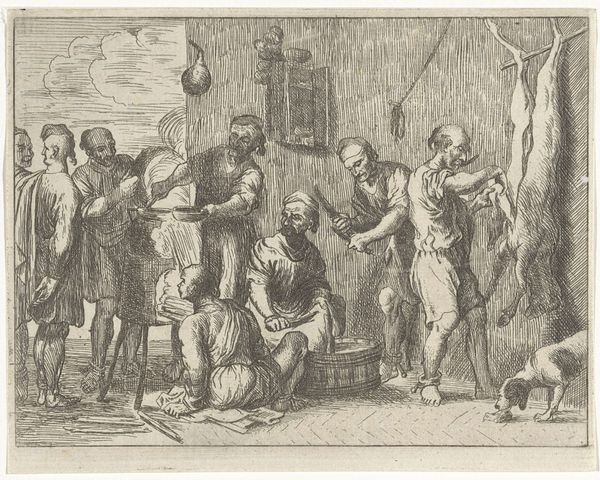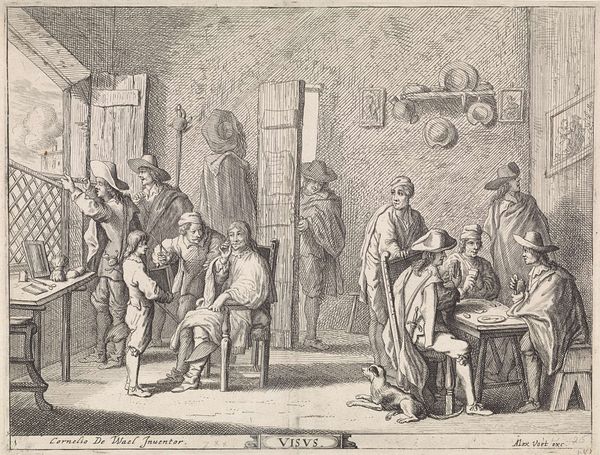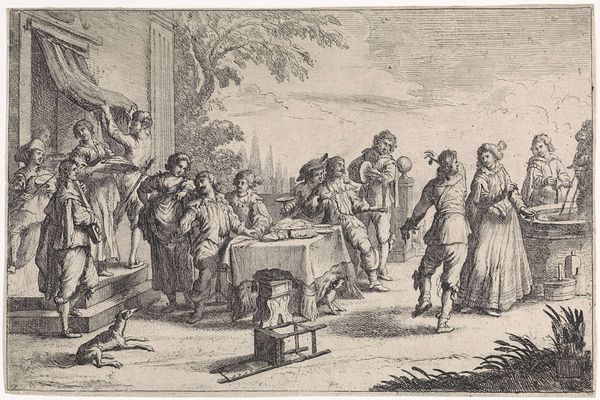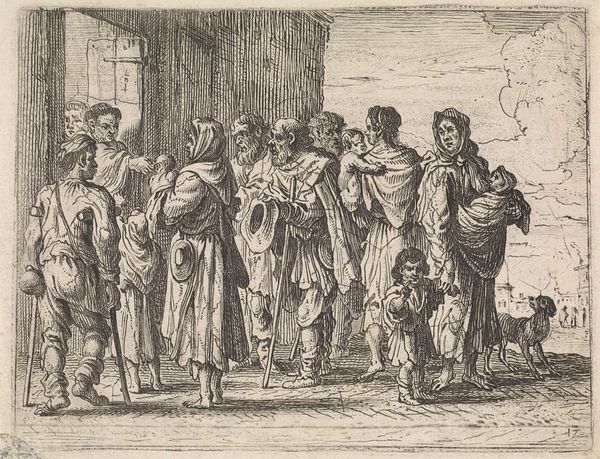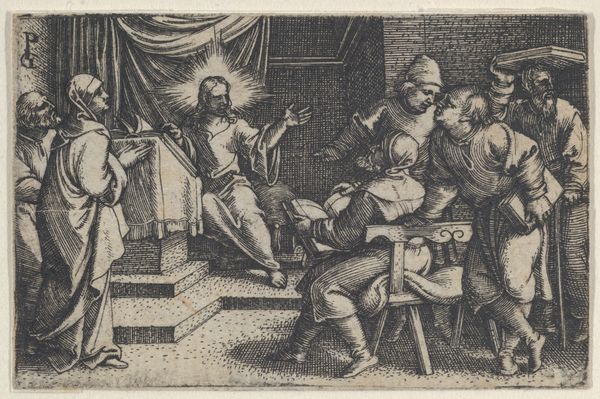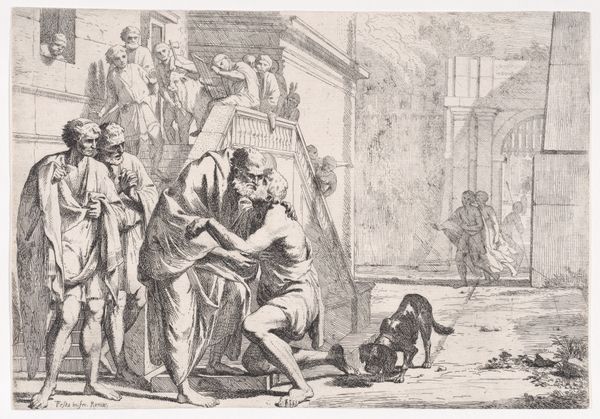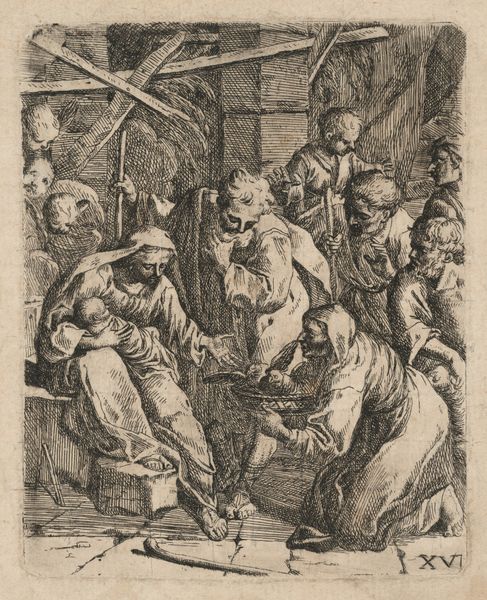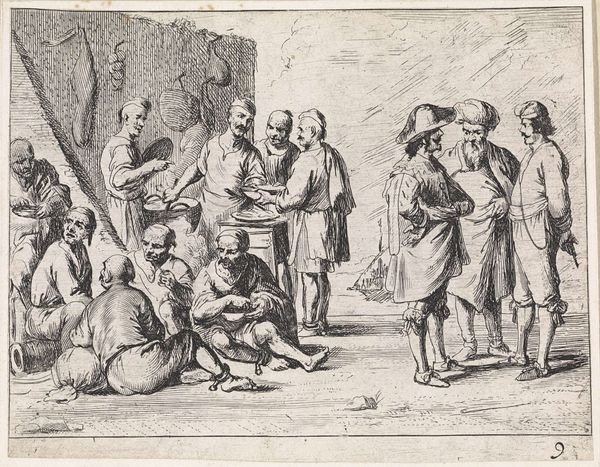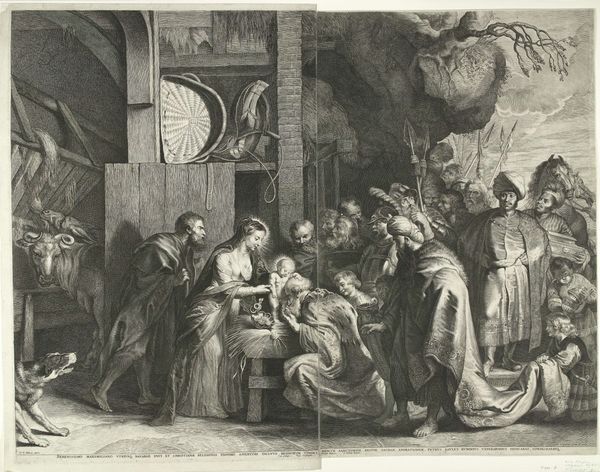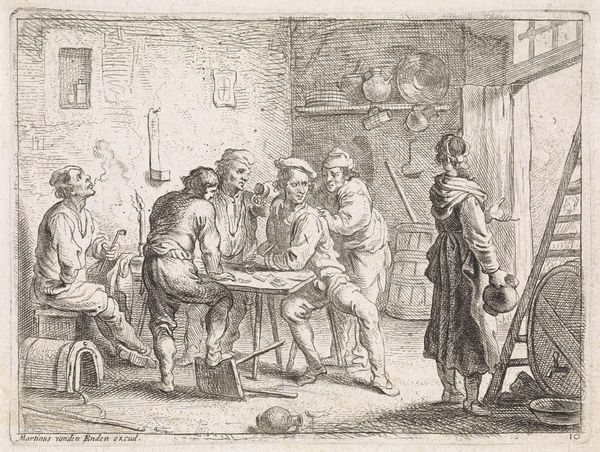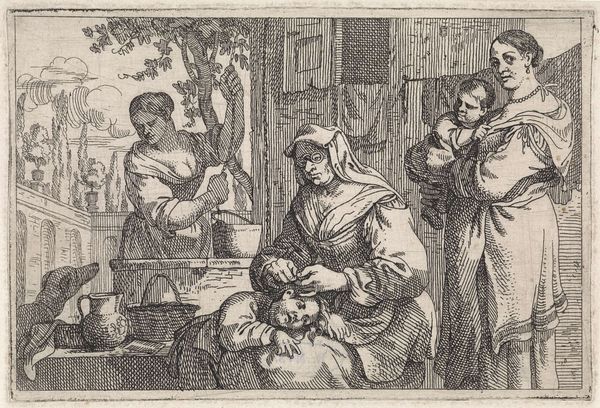
Islamitische galeislaven krijgen soep terwijl een schaap wordt uitgebeend 1647
0:00
0:00
engraving
#
baroque
#
group-portraits
#
genre-painting
#
history-painting
#
engraving
#
realism
Dimensions: height 110 mm, width 145 mm
Copyright: Rijks Museum: Open Domain
Curator: Cornelis de Wael’s 1647 engraving, titled "Islamitische galeislaven krijgen soep terwijl een schaap wordt uitgebeend"—"Islamic Galley Slaves Receiving Soup While a Sheep is Butchered"—presents a rather vivid scene. Editor: My initial impression is one of stark, almost brutal domesticity. The light and shadow create a very active, tense feeling in the composition, drawing your eye directly to the central activity. Curator: It’s interesting you describe it as domestic. Though genre painting often depicts such scenes, what kind of cultural encoding do you think this contains, considering that galley slaves in those days would have likely been prisoners of war or captives? Editor: Precisely. We can see the casual butchering alongside what seems to be the preparation of a meal for a group that, judging from the title, is meant to be viewed as “other.” The artist depicts Muslim figures enduring what is possibly hard labor—notice the manacles on the ankle of the sheep butcher. This everyday activity is inseparable from a backdrop of political violence. Curator: And if we consider these details with an eye toward allegory, what repetitive, underlying themes emerge? We know that genre painting always carries a subtext, that objects and characters have symbolic weight. For instance, what do you read from the repeated crescent shape visible in their shaved hairlines, as opposed to the fuller heads of hair seen among their captors? Editor: That contrast strikes me as an explicit marker of difference, reinforced through the controlled image. Even something like the inclusion of the dog, sniffing at the discarded sheep parts, feels symbolic, evoking themes of servitude. But I find the emotionality to be just as central. Look at the faces, almost resigned, their daily lives are about suffering. Curator: The engraving medium itself contributes to this effect, no? With hard, etched lines allowing for minimal blending—making it very effective for transmitting ideological messages as clearly as possible, devoid of excessive subtlety. The composition and iconography certainly serve to highlight those messages, and how effectively! Editor: It’s unsettling how easily these scenes become normalized. I guess the image asks us to confront the banality of exploitation. We are all part of some hierarchy. Curator: Yes, indeed. The echoes of history and power. What will be thought of our everyday practices centuries from now, I wonder.
Comments
No comments
Be the first to comment and join the conversation on the ultimate creative platform.
